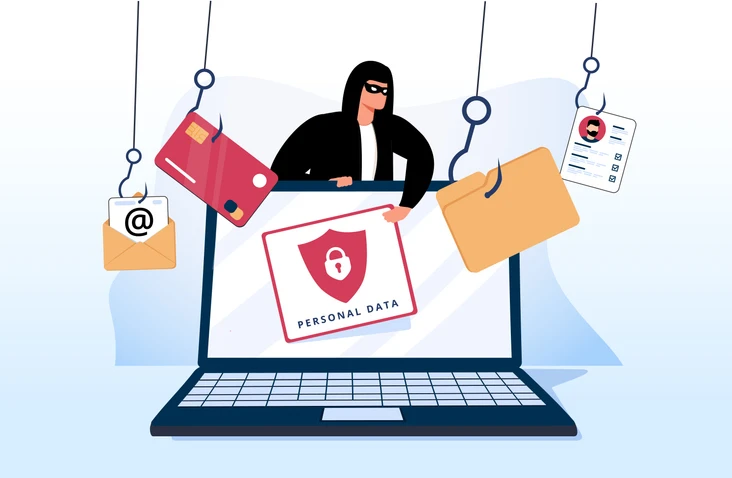Understanding Phishing Attacks
Phishing attacks are a type of cybercrime where attackers impersonate trusted entities to deceive victims into revealing sensitive information, such as passwords, credit card numbers, or confidential business data. These attacks often occur via email, text messages, or fraudulent websites designed to mimic legitimate ones. The primary goal of phishing is to exploit human trust and gain unauthorized access to personal or organizational resources.
The term “phishing” originates from the concept of "fishing," where cybercriminals use bait to lure victims into providing valuable information. Over the years, phishing has evolved into a sophisticated threat with various tactics, making it one of the most common and damaging forms of cyberattacks worldwide. One key feature of phishing attacks is their reliance on social engineering. Attackers manipulate emotions like fear, urgency, or curiosity to prompt victims to act quickly without fully scrutinizing the message's authenticity. For example, an email might claim that your account has been compromised, urging you to click a link to reset your password. The link, however, leads to a malicious site designed to steal your login credentials.
Phishing attacks can target both individuals and organizations. In a business context, phishing is often used to breach corporate networks, steal proprietary data, or gain access to financial systems. Some attacks, such as spear phishing, focus on specific individuals within a company, like executives or IT administrators, increasing the chances of success.
Understanding phishing is the first step in building a robust defense against it. Recognizing common tactics, such as fake email domains, unexpected requests for sensitive information, or grammatical errors in messages, can help individuals and organizations identify potential threats. By staying vigilant and adopting best practices, such as multi-factor authentication and employee training, it is possible to significantly reduce the risk of falling victim to phishing attacks.
Common Types of Phishing Attacks
Phishing attacks come in many forms, each tailored to exploit specific vulnerabilities or target different types of victims. Understanding these variations is crucial to recognizing and defending against them. Below are some of the most common types of phishing attacks:
- Email PhishingEmail phishing is the most prevalent form of phishing attack. Cybercriminals send emails that appear to come from legitimate organizations, such as banks, online services, or government agencies. These emails often include urgent messages, like claims of account breaches or unpaid bills, to pressure recipients into clicking on malicious links or downloading harmful attachments. The goal is to steal credentials, financial information, or install malware on the victim’s device.
- Spear PhishingUnlike broad email phishing campaigns, spear phishing targets specific individuals or organizations. These attacks are highly personalized and often involve extensive research about the target. For example, an attacker might impersonate a colleague or a trusted business partner to request sensitive information or financial transactions. Because of their tailored nature, spear phishing attacks are more convincing and harder to detect.
- WhalingWhaling is a subset of spear phishing that specifically targets high-ranking executives, such as CEOs or CFOs. These attacks often focus on gaining access to critical business systems or authorizing fraudulent transactions. Whaling emails may use official-looking documents, such as tax forms or legal requests, to deceive the victim.
- Smishing and VishingSmishing (SMS phishing) and vishing (voice phishing) are phishing attacks conducted via text messages or phone calls. Smishing scams typically involve messages that contain links to malicious sites, while vishing attackers impersonate trusted entities over the phone to extract sensitive information, such as PINs or passwords.
- Clone PhishingClone phishing involves creating a nearly identical copy of a legitimate email previously sent by a trusted organization. Attackers replace the original link or attachment with a malicious version, making it appear as though the email is a follow-up or resend of a genuine message.
- Business Email Compromise (BEC)In a BEC attack, cybercriminals infiltrate or spoof business email accounts to defraud organizations. This type of phishing often involves requesting wire transfers, sensitive documents, or login credentials. BEC attacks have resulted in significant financial losses for companies worldwide.
- PharmingPharming involves redirecting victims from legitimate websites to malicious ones without their knowledge. This can happen through compromised DNS settings or infected devices. Once on the fake site, victims may unknowingly enter their sensitive information.
Understanding the different types of phishing attacks helps individuals and organizations recognize potential threats and respond proactively. Each type of phishing requires specific detection techniques and countermeasures, such as employee training, robust email filters, and secure authentication methods, to minimize risks.
The Impact of Phishing Attacks on Businesses
Phishing attacks pose a significant threat to businesses of all sizes, with far-reaching consequences that extend beyond financial losses. These attacks exploit human vulnerabilities to gain unauthorized access to sensitive information, disrupt operations, and undermine trust. Understanding the potential impact of phishing attacks on businesses is essential to building effective defenses.
- Financial LossesPhishing attacks can lead to substantial financial losses for businesses. These losses may occur through direct theft, such as unauthorized wire transfers or fraudulent purchases, as well as indirect costs like fines, legal fees, and remediation expenses. According to industry reports, the average cost of a phishing attack for a business can run into millions of dollars, particularly when sensitive data is stolen or systems are compromised.
- Data BreachesOne of the primary goals of phishing attacks is to steal sensitive information, such as employee credentials, customer data, or proprietary business secrets. A successful phishing attack can result in a full-scale data breach, exposing the organization to legal liabilities, regulatory penalties, and loss of competitive advantage. In some cases, data breaches caused by phishing attacks can take months or even years to detect, exacerbating the damage.
- Operational DisruptionPhishing attacks can severely disrupt business operations. Malware deployed through phishing emails, such as ransomware, can lock businesses out of critical systems, halting productivity and impacting service delivery. Recovery from such attacks often requires significant downtime, during which revenue generation and customer trust are compromised.
- Reputational DamageA phishing attack can erode the trust that customers, partners, and stakeholders have in a business. News of a data breach or compromised systems can tarnish the company’s reputation, resulting in lost customers, reduced brand loyalty, and negative publicity. Rebuilding trust after a phishing attack is a long and challenging process, especially in highly competitive industries.
- Compliance and Regulatory PenaltiesFor businesses subject to data protection regulations, such as GDPR or HIPAA, a phishing-related data breach can result in significant fines and penalties. Regulatory bodies often impose strict requirements for data security, and failure to comply can lead to legal action, further compounding the financial and reputational fallout.
- Loss of Intellectual PropertyPhishing attacks targeting trade secrets, research data, or proprietary technologies can have devastating consequences. Stolen intellectual property can fall into the hands of competitors or be sold on the black market, eroding a company’s competitive edge and future growth potential.
- Employee Productivity and MoraleIn the aftermath of a phishing attack, employees often face increased workloads, stress, and uncertainty as they deal with the fallout. Additionally, implementing new security measures or training programs to prevent future attacks can temporarily reduce productivity, adding to the overall impact on the business.
- Mitigating the ImpactBusinesses can minimize the impact of phishing attacks by adopting a proactive cybersecurity approach. This includes educating employees about phishing tactics, deploying advanced email filters and anti-phishing tools, implementing multi-factor authentication, and conducting regular security audits. By prioritizing cybersecurity, organizations can reduce their risk and ensure resilience against phishing attacks.






